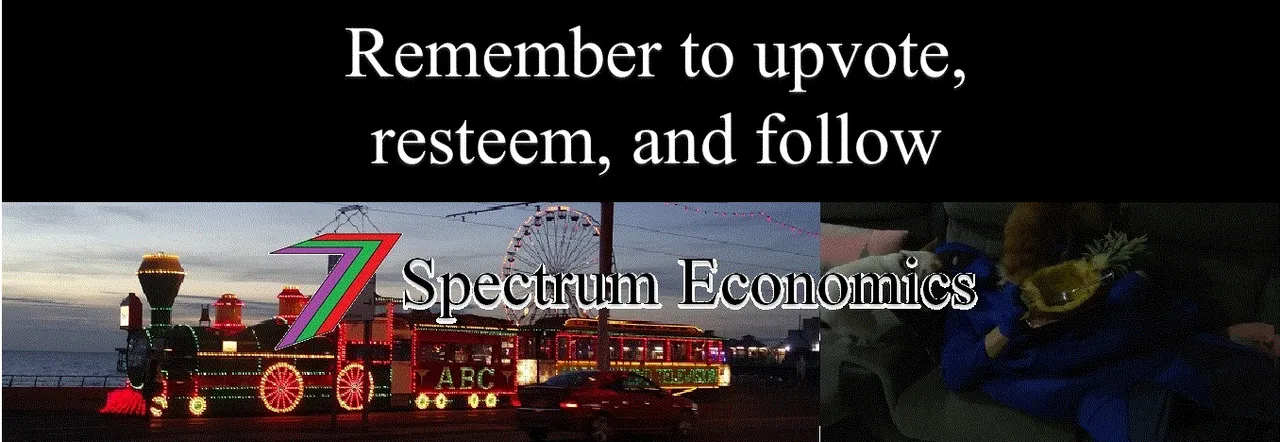Hi Steemians,
I have mentioned in some of my other posts that I am writing a book with the working title ‘Vegan Economics’. I will, as the book progresses, include sections of the first draft in Steemit posts. I posted ‘My Vegan Story’ in two parts, which will be included in the book. The links to these posts are as follows, Part 1: https://steemit.com/economics/@spectrumecons/vegan-economics-my-story-part-1 and Part 2: https://steemit.com/economics/@spectrumecons/vegan-economics-my-story-part-2.
Today I’m including some of my work relating to ‘Horse Racing’. This work will be split over two parts (posts). Part 1 focuses on the impact to humans (I have chosen to use ‘humans’ rather than ‘society’ in the context of this post). This post has a strong focus on betting and the profits that are made from betting. I also briefly discuss the impacts from festivities that surround some of the major horse racing events.
Part 2 will focus on the costs to animals. I will look at the cost of abuse as well as the cost of reduced expected life.
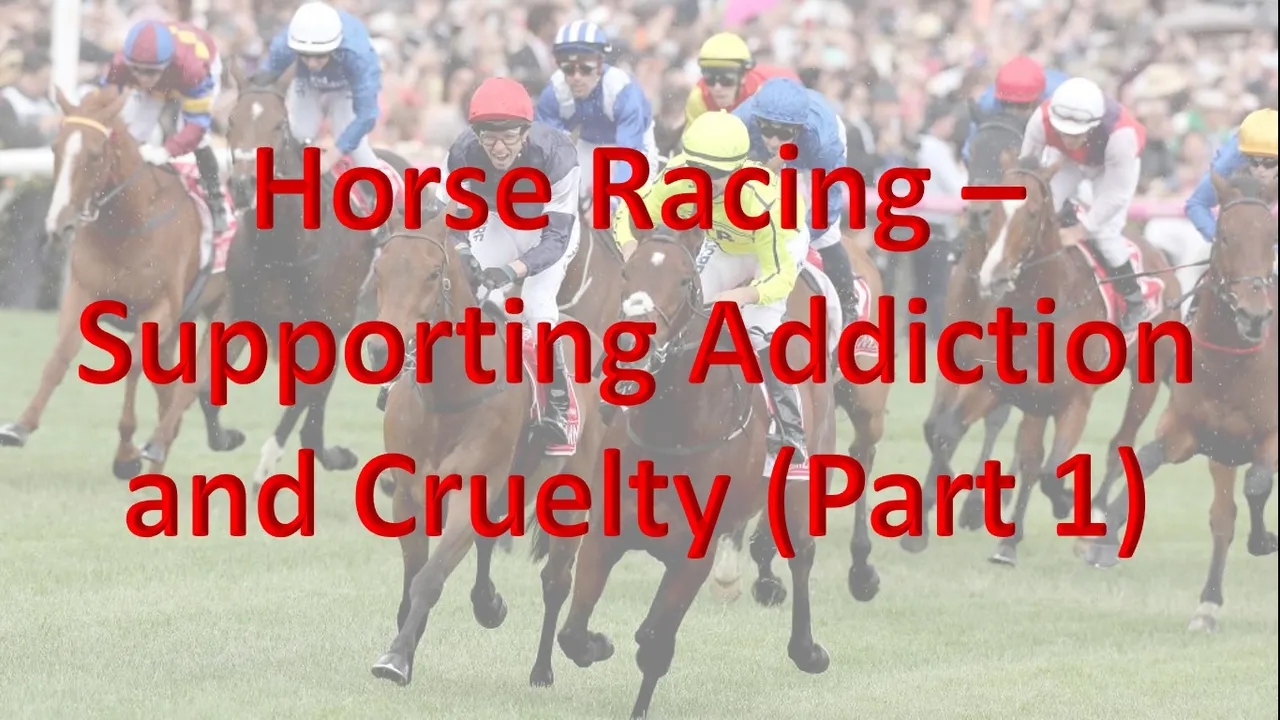
Horse Racing is a very popular sport in many countries. The United Kingdom has Ascot, Australia has the Melbourne Cup, and the United States of America has the Kentucky Derby. The biggest attraction to horse racing is the betting. Betting on major races is considered a favourite past time for many. Almost AU$1.5 Billion (B&T Magazine) is bet on the Melbourne Cup each year. Table 1 contains the amount of money bet on major horse races.
Table 1: Money Bet on Major Horse Racing Events

The odds of winning are structured based on the amount of money bet on each horse, see Table 2 for the odds on each horse for the Kentucky Derby in 2016.
Table 2: Odds provided of winning the Kentucky Derby for each horse
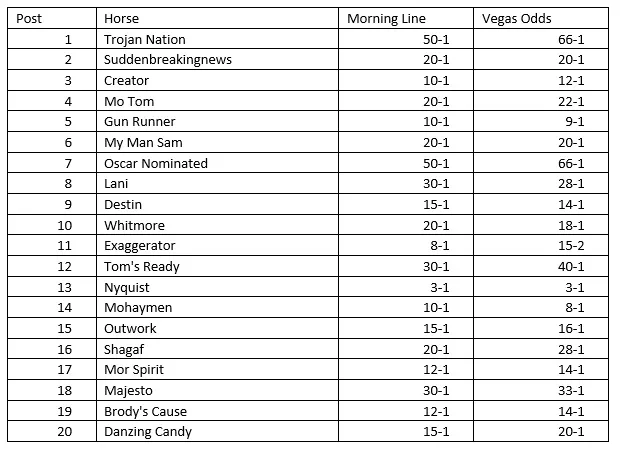
As you can see from how the odds are structured, it does not matter which horse wins, profits are always made by the bookmakers. This can be proven using the following rule.

For the 2016 Kentucky Derby, using the morning line and the Vegas odds, the value calculated using the equation above was 1.35 and 1.31 respectively. Both these numbers are well above 1. This indicates that the 2016 Kentucky Derby was profitable for the major bookmakers (small bookmakers could still lose money if bets made with them do not align with the odds set by the major bookmakers, even then, small bookmakers can hedge their bets with other bookmakers) regardless of the winning horse. Hence, the profitability of horse racing is a big draw to the industry. The more people that get involved and make bets, the greater the profits to the industry.
The profit from the Kentucky Derby can be approximated using the odds provide in Table 2. This can be done by approximating how much is bet on each horse. This value can be estimated using the following formula.

Using the above equation and the Vegas odds of winning, we can calculate approximately the amount of money bet on a horse, for example, Trojan Nation.

The amount of money that would be paid out on Trojan Nation if Trojan Nation should win the race can be expressed using the following equation.

Regardless of which horse wins the Kentucky Derby, approximately US$72 Million will be paid out on winning bets based on the US$94 Million total value of all bets made for the event. The remaining money after the payout on bets has been made, minus operating costs, are the profits to the bookmakers. For the Kentucky Derby, the total profits to bookmakers would equal approximately US$22 Million ($94 Million - $72 Million) minus operating costs. This value in reality could be higher if bookmakers have inside information regarding the race. The odds could be skewed in favour of particular horses and bookmakers' profits could climb even higher.
The actual betting odds of the Kentucky Derby can be adjusted to fair betting odds. This adjustment can be done using the following formula.

Table 3 displays the adjusted odds if the bookmakers aimed to breakeven from betting.
Table 3: Adjusted fair odds of winning

Other Expenditure
Beyond the amount of money changing hands from betting. Major horse racing events have other expenditure relating to fashion, food, and celebrations that further boost potential profits and growth to the economy.
According to flemington.com, the following statistics were compiled by IER Pty Ltd for the Melbourne Cup Carnival.
Data compiled by IER found the 2016 Melbourne Cup Carnival was also responsible for:
• A 7.8 per cent increase in the number of out-of-state individuals (80,472) attending the Melbourne Cup Carnival; including 65,038 event motivated attendees (up 21.8% on 2012) and 5,494 extended stay visitors (up 45.3% on 2015)
• The number of New Zealand visitors rising for the third consecutive year, up 42% on 2013
• $38.3 million in commercial accommodation spending in Victoria (up from $31.5 million in 2015) over 234,104 bed nights (up 21.9% on 2015)
• In conjunction with P&O Cruises and Carnival Australia, cruise ship passengers attending the Carnival increased from 7,785 in 2015 to 7,971 in 2016, contributing nearly $11 million in value added impact
• $44.3 million in fashion and retail spending in Victoria (up 6% on 2015)
• The purchase of 295,397 individual fashion items including 49,067 pairs of shoes, 46,448 dresses, 11,659 suits and 59,665 hats and fascinators
• $23.6 million in spending on meals, food and beverages, and $45.2 million on wagering
Source: flemington.com, accessed on 27/11/2017
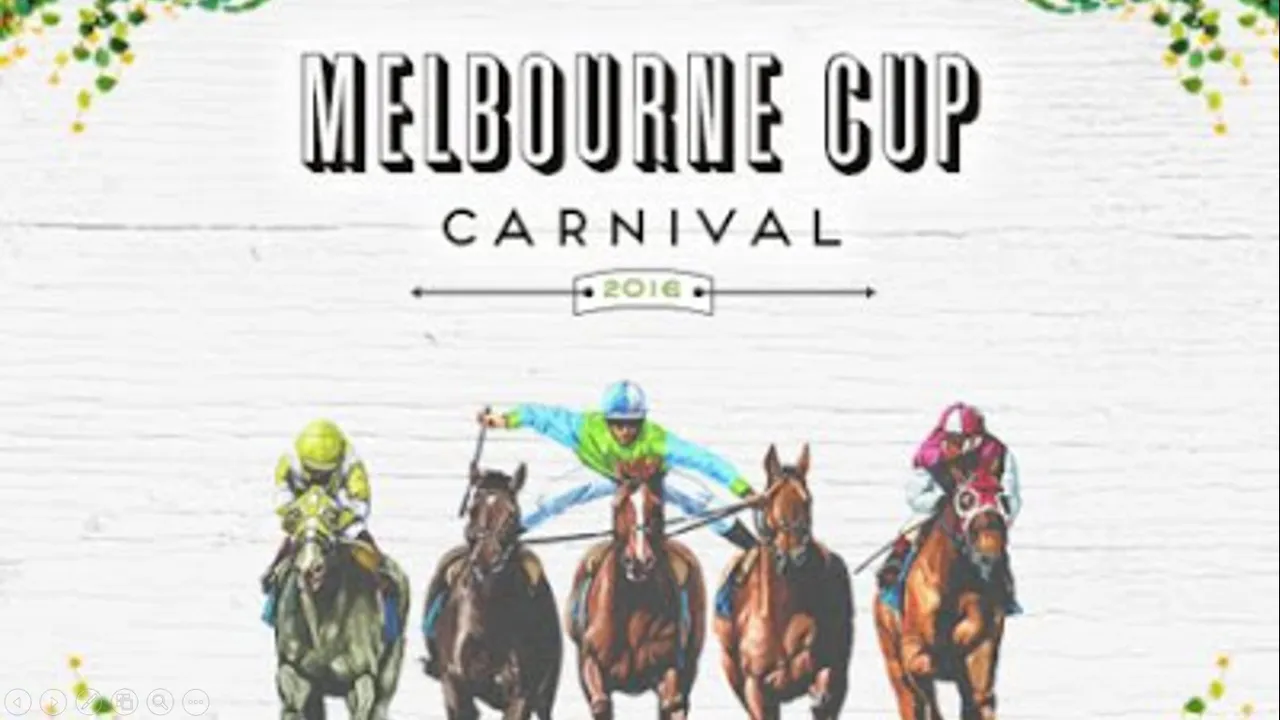
Most economists will consider the above figures as good. These figures demonstrate economic activity, which translates into higher profits and more jobs and presumably more enjoyment (utility) for those spending the money and participating in the event. Then again, similar arguments could be made about the games at the Colosseum in Ancient Rome. This argument is a little one-sided if we only consider the welfare of those in the stands and neglect the welfare of those in the arena (track if we are talking about horses).
As with betting, the big winners from festivities are big businesses (increased profits). Government can use the above statistics as a show of their achievement as well as an argument for continuing to support horse racing.
The statistics can also be used to argue that festivities are wasteful. Goods such as fashion items are rarely used or possibly used only once. There is a high chance of excessive drinking. Those that chose to travel to Melbourne for the Melbourne Cup could have traveled elsewhere and had almost as much enjoyment engaging in an alternative activity.
What is the net effect to humans from horse racing?
From the human perspective, horse racing offers entertainment in the races themselves and the thrill from potentially making money from betting. Horse racing offers quite a significant cost in regards to financial loss from betting and possible addiction to betting, which in some cases has led people to financial ruin. Major bookmakers always make money from gambling on horse racing as the odds are always in favour of the bookmakers.
The bookmakers gain in wealth is at the expense of the typical person making bets. If we look at it in terms of gained and lost utility. The loss in utility of losing money for a betting person far exceeds the gain in utility to a major bookmaker. This can be seen using the diagram in Figure 1 that maps utility of wealth.
Figure 1: Utility increasing at a decreasing rate as wealth increases
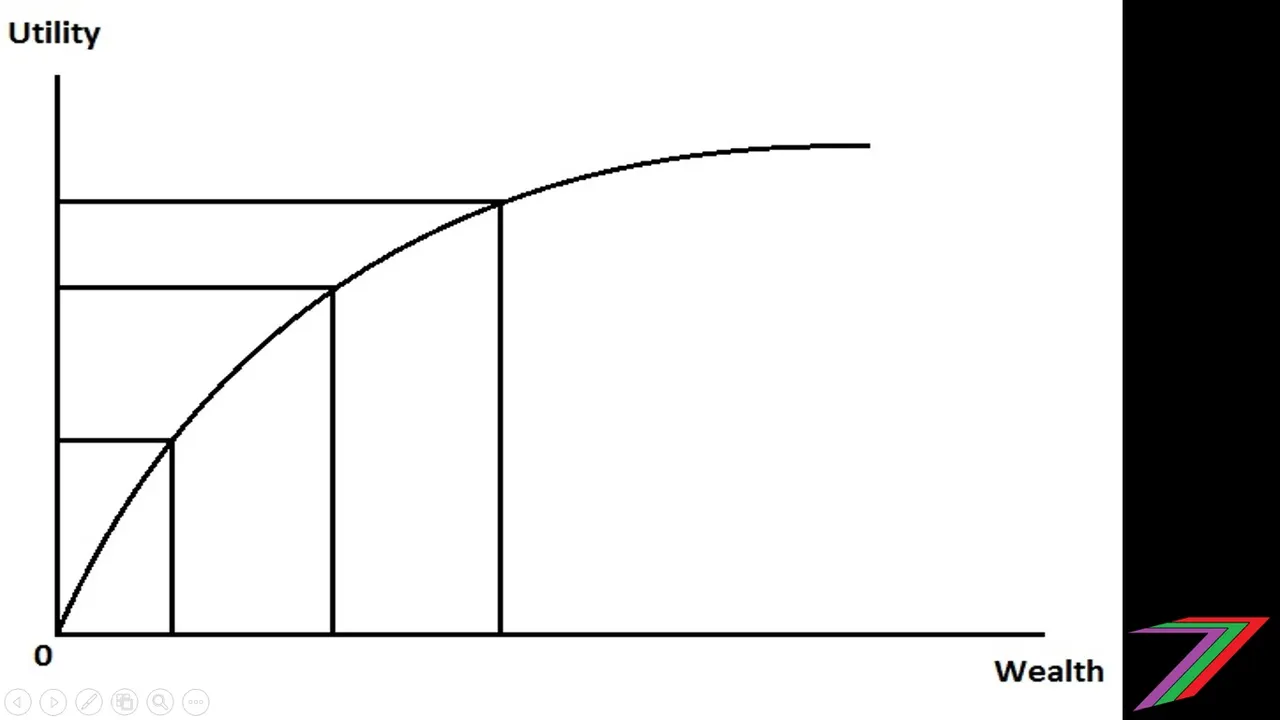
As wealth increases, the level of utility obtained from each additional dollar falls. If a person with $10,000 gives $2,000 to a person who has $500,000. The gain in utility from the $2,000 to the wealthier person is less than the loss of utility to the less wealthy person. This is because the person with less wealth is more likely to have more pressing needs to spend the $2,000 on than the person with greater wealth.
From a human perspective horse racing produces a net loss to those betting. The overall gain in utility to bookmakers does not outweigh the loss in utility to those making bets. The festivities around major horse racing events provides perceived enjoyment to those participating and can be considered a benefit of holding the event. We can also argue that if the event did not exist those people that enjoyed the event could have obtained almost as much enjoyment from alternative events or activities.
A more practical approach to looking at enjoyment from major horse racing festivities is to compare the enjoyment that could have been obtained from alternative activities (marginal benefit/enjoyment/satisfaction/utility net of opportunity cost (cost of enjoyment lost from not participating in the next best activity)). Since people attend the Melbourne Cup, we should assume they obtain positive net marginal benefit/utility from being at the event. The extent of this cannot be clearly defined.
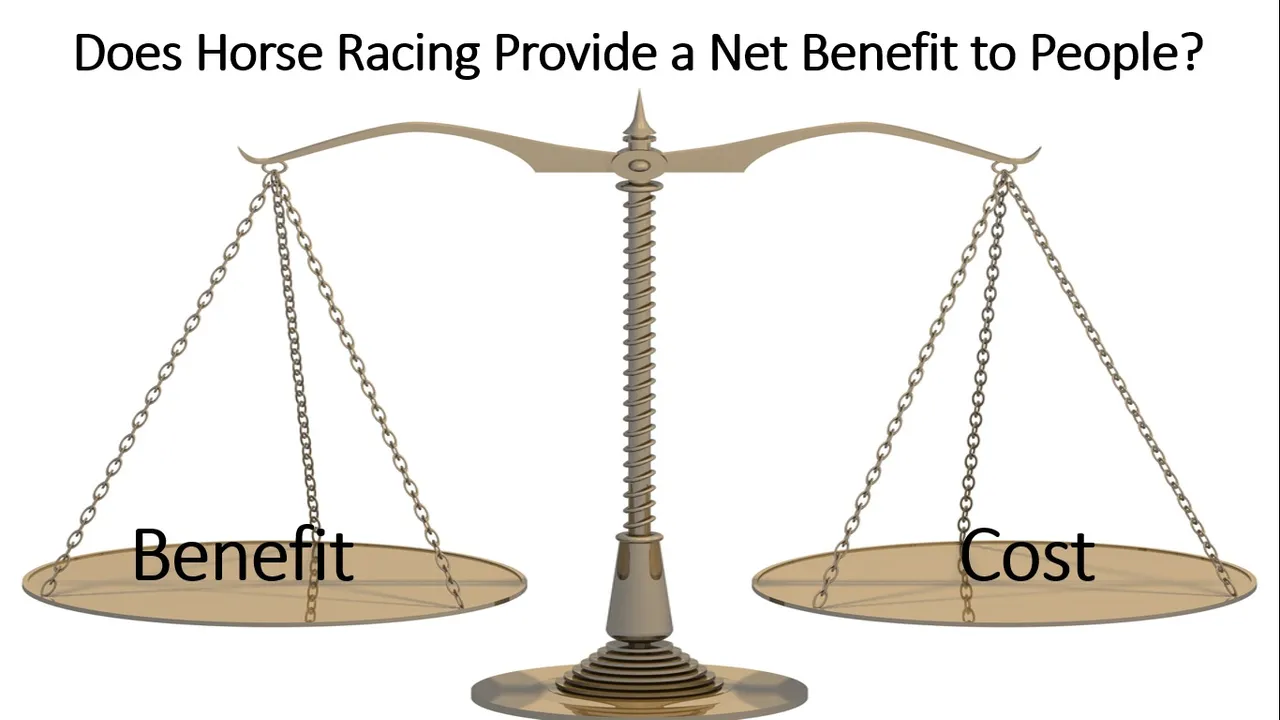
Do the net marginal benefits from the festivities outweigh the costs to those that lose from gambling? Major bookmakers, and retail outlets benefit from higher profits. So is there a net gain to humans from horse racing? Most horse races do not have the extent of festivities of the Melbourne Cup. All horse races involve gambling, which I have demonstrated to be a net loss to society. At this point, I would say the net overall impact to humans is likely to be negative. If we exclude the big winners from horse racing (bookmakers, major retailers, Government), then I feel certain that the impact to humans is negative.
If we now factor the cost to animals, the net cost of horse racing increases considerably. According to horse racing kills org.com, the average life of a race horse is 5 years. In the wild the average lifespan is predicted to be 25 years. Race horses only live 1/5 as long as they would if they were wild. In Part 2 I will be focusing on the cost to race horses and I will present the overall cost of horse racing (both to humans and animals).

Thank you for spending time to read my post, I hope you enjoyed it. I will be adding many more posts relating to 'Vegan Economics' in the coming months.
